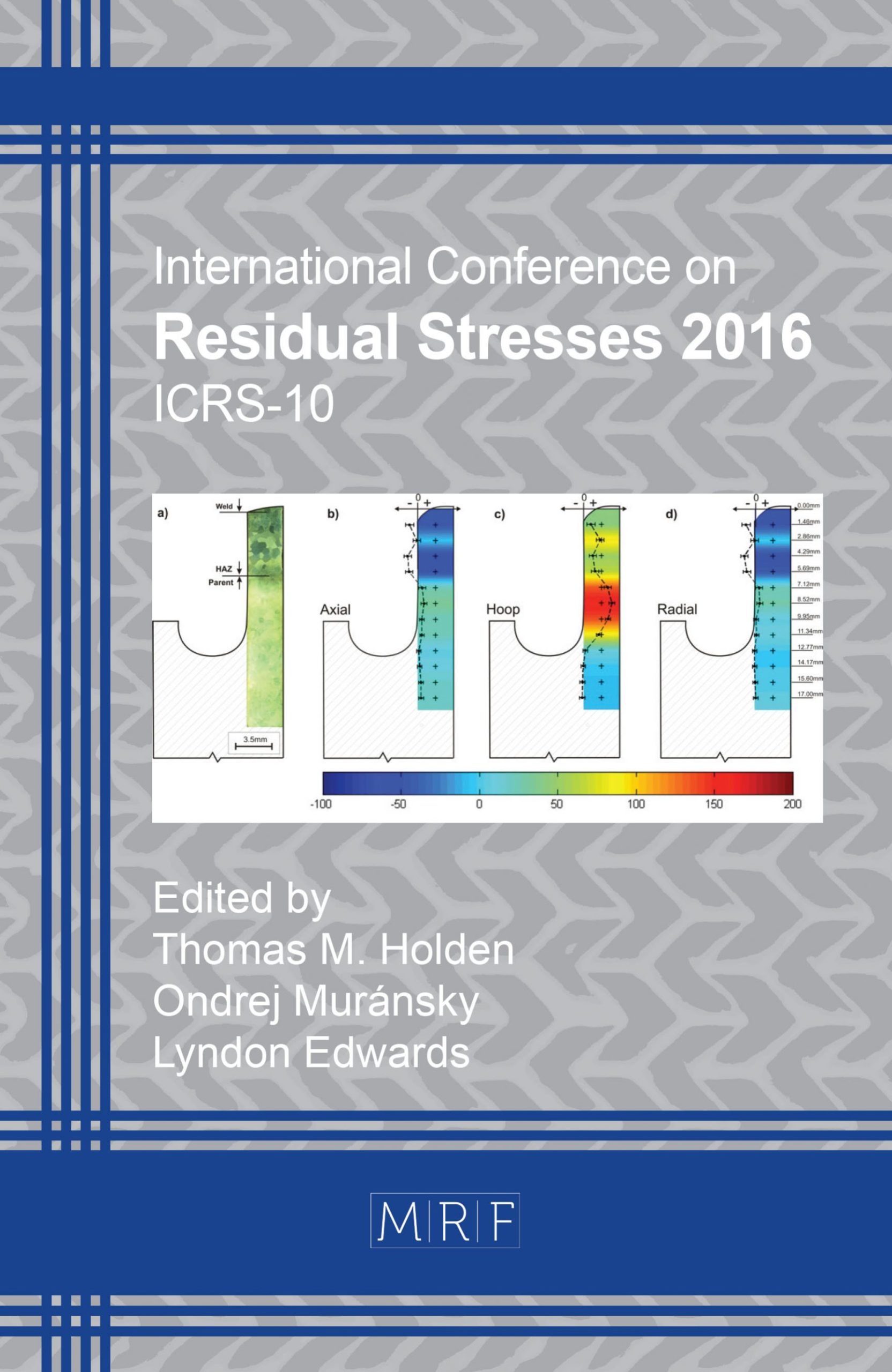Residual Stress Analysis in Injection Moulded Polycarbonate Samples
A. Magnier, B. Scholtes, T. Niendorf
download PDFAbstract. The current paper presents results of residual stress measurements in injection moulded polycarbonate samples, which have been processed in various ways to introduce different residual stress states. The hole drilling as well as the ring-core method were used and methodological developments as compared to measurement procedures applied on metallic samples are outlined. In this context the time dependent viscoelastic behaviour of the investigated material as well as temperature fluctuations during testing are of high importance. It is demonstrated that manufacturing parameters, i.e. mould temperature and injection rate, have a significant impact on the resulting residual stress states. A frame made of aluminium was used to induce pronounced tensile residual stresses in the sample by preventing shrinkage. Holes of different diameters were drilled in order to get information at different depths from the surface.
Keywords
Residual Stress, Plastics, Polycarbonate, Hole Drilling Method, Ring-core Method, Injection Moulding
Published online 12/22/2016, 6 pages
Copyright © 2016 by the author(s)
Published under license by Materials Research Forum LLC., Millersville PA, USA
Citation: A. Magnier, B. Scholtes, T. Niendorf, ‘Residual Stress Analysis in Injection Moulded Polycarbonate Samples’, Materials Research Proceedings, Vol. 2, pp 181-186, 2017
DOI: http://dx.doi.org/10.21741/9781945291173-31
The article was published as article 31 of the book Residual Stresses 2016
![]() Content from this work may be used under the terms of the Creative Commons Attribution 3.0 licence. Any further distribution of this work must maintain attribution to the author(s) and the title of the work, journal citation and DOI.
Content from this work may be used under the terms of the Creative Commons Attribution 3.0 licence. Any further distribution of this work must maintain attribution to the author(s) and the title of the work, journal citation and DOI.
References
[1] A. Guevara-Morales, U. Figueroa-Lopez, Residual stresses in injection moulded products, Journal Material Science 49 (2014) 4399-4415. http://dx.doi.org/10.1007/s10853-014-8170-y
[2] P. So and L.J. Broutman, Residual stresses in polymers and their effect on mechanical behaviour, Polymer engineering and science 16 (1976) 785-791. http://dx.doi.org/10.1002/pen.760161202
[3] A. Siegmann, A. Buchman, S. Kenig, Residual stresses in polymers.II. Their effect on mechanical behavior, Polymer engineering and science 21 (1981) 997-1002. http://dx.doi.org/10.1002/pen.760211503
[4] Garcia Sobolevski, E. (2007), Residual stress analysis of components with real geometries using the incremental hole drilling technique and a differential evaluation method, PhD thesis, Universität Kassel
[5] G.S. Shajer (2013), Pratical Residual Stress measurement methods, Wiley. http://dx.doi.org/10.1002/9781118402832
[6] A. Magnier, B. Scholtes, T. Niendorf, Aspects concerning the analysis of residual stress in plastic materials using the hole drilling method, (In preparation).
[7] A. Magnier, A. Nau, B. Scholtes, Some Aspects of the application of the Hole Drilling Method on Plastic Materials, in: S. Bossuyt et al. (eds.), Residual Stress, Thermomechanics and Infrared Imaging, Hybrid Techniques and Inverse Problems, Vol. 9, Conf. Proceedings of the Society for Experimental Mechanics Series, Springer Int. Publishing (2016) 371-380. http://dx.doi.org/10.1007/978-3-319-21765-9_45
[8] A. Nau, B. Scholtes, M. Rohleder, J.P. Nobre, Application of the Hole Drilling Method for Residual Stress Analyses in Components made of Polycarbonate, Journal of Plastics Technology 7 (2011) 66-85.
[9] ASTM E837-13, Standard Test Method for Determining Residual Stresses by the Hole-Drilling Strain-Gage Method, ASTM International. (2013)































